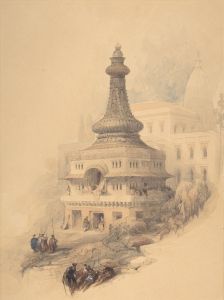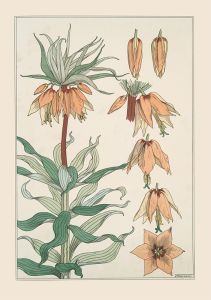
Interior of the mosque of the Metwalys [Metwalis].
A hand-painted replica of David Roberts’s masterpiece Interior of the mosque of the Metwalys [Metwalis]., meticulously crafted by professional artists to capture the true essence of the original. Each piece is created with museum-quality canvas and rare mineral pigments, carefully painted by experienced artists with delicate brushstrokes and rich, layered colors to perfectly recreate the texture of the original artwork. Unlike machine-printed reproductions, this hand-painted version brings the painting to life, infused with the artist’s emotions and skill in every stroke. Whether for personal collection or home decoration, it instantly elevates the artistic atmosphere of any space.
David Roberts was a Scottish painter known for his detailed and historically significant depictions of architectural and historical sites. One of his notable works is "Interior of the Mosque of the Metwalys," which captures the intricate interior of a mosque in Cairo, Egypt. This painting is part of Roberts' larger body of work that focuses on the Middle East, a region he explored extensively during the 19th century.
Roberts embarked on a journey to the Middle East in 1838, traveling through Egypt, the Holy Land, and parts of Syria. His travels were part of a larger trend during the 19th century when European artists and scholars showed a growing interest in the Orient, a term used at the time to describe the cultures and lands of the Middle East and Asia. Roberts' journey was significant as it allowed him to create a comprehensive visual record of the region's architecture and landscapes, which were relatively unknown to the European public at the time.
The "Interior of the Mosque of the Metwalys" is a lithograph that was part of Roberts' publication "The Holy Land, Syria, Idumea, Arabia, Egypt, and Nubia," which was released in several volumes between 1842 and 1849. This publication included a series of lithographs based on Roberts' sketches and paintings, produced with the help of lithographer Louis Haghe. The works were highly praised for their accuracy and attention to detail, providing a glimpse into the architectural grandeur and cultural richness of the Middle East.
The mosque depicted in this particular work is the Mosque of the Metwalys, also known as the Mosque of al-Muayyad, located in Cairo. The mosque is renowned for its architectural beauty and historical significance. It was commissioned by Sultan al-Muayyad in the early 15th century and is an example of Mamluk architecture, characterized by its intricate stonework, grand domes, and ornate decorations.
Roberts' depiction of the mosque's interior highlights the elaborate design elements typical of Islamic architecture, such as the use of geometric patterns, arabesques, and calligraphy. The lithograph captures the play of light and shadow within the mosque, emphasizing the spatial depth and the serene atmosphere of the sacred space. The attention to detail in the architectural elements reflects Roberts' skill in rendering complex structures with precision and artistry.
David Roberts' work, including the "Interior of the Mosque of the Metwalys," played a crucial role in shaping Western perceptions of the Middle East during the 19th century. His paintings and lithographs were among the first to provide a detailed and accurate visual representation of the region's architectural heritage. They continue to be valued not only for their artistic merit but also for their historical significance, offering insights into the cultural and architectural history of the Middle East.
Roberts' legacy as an artist is marked by his ability to capture the essence of the places he visited, providing a visual documentation that has contributed to the understanding and appreciation of Middle Eastern art and architecture. His works remain an important resource for historians, art enthusiasts, and anyone interested in the rich cultural tapestry of the region.





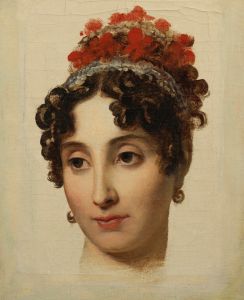
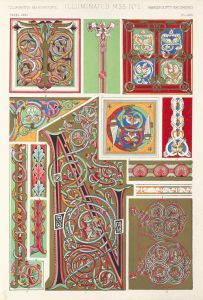

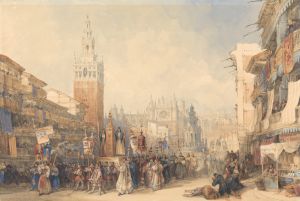
![Karnac [Karnak]. Nov. 29th, 1838.](/imgs/217502/s/david-roberts-karnac-karnak-nov-29th-1838-8df2346d.jpg)
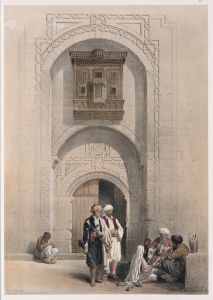
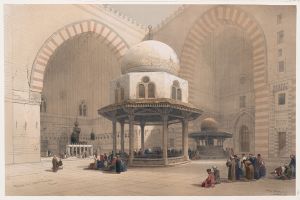
![Pyramids of Geezeh [Giza].](/imgs/217529/s/david-roberts-pyramids-of-geezeh-giza-edcbd9cd.jpg)
![Temple of Wady Kardassy [Qirtâsî] in Nubia.](/imgs/217550/s/david-roberts-temple-of-wady-kardassy-qirtasi-in-nubia-d2cce283.jpg)
![Temple of Wady Saboua [Wadi al-Sabua], Nubia.](/imgs/217551/s/david-roberts-temple-of-wady-saboua-wadi-alsabua-nubia-52e62db.jpg)
